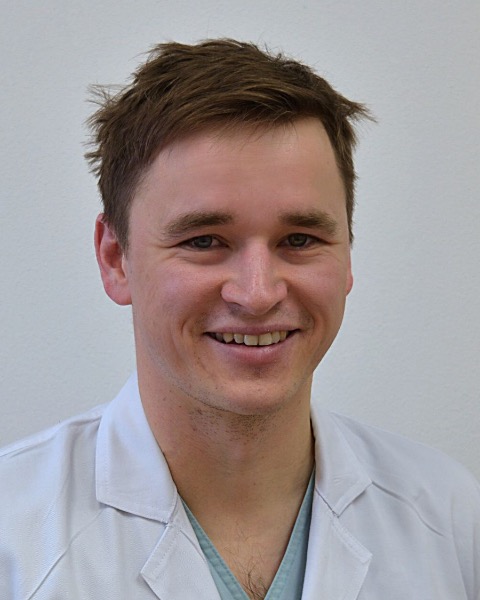Myeloma Genomics and cell signaling
Poster Session 3
P-344: Multiomics profiling of extramedullary multiple myeloma tumors and their microenvironment
Friday, September 29, 2023
1:15 PM - 2:15 PM EEST

Tomas Jelinek, MD, PhD
Associate Professor
University Hospital Ostrava and University of Ostrava, Ostrava, Czech Republic, Czech Republic
Introduction: Extramedullary disease (EMD) is an aggressive manifestation of multiple myeloma (MM), where MM plasma cells (PCs) become independent of the bone marrow (BM) microenvironment and infiltrate other tissues and organs. The incidence of EMD is increasing and is associated with worse prognosis and drug resistance. Unfortunately, the molecular processes underpinning the pathogenesis of extramedullary form of MM that could help better tailor treatment, are poorly understood. Therefore, we performed the most comprehensive multiomics study of EMD cells to date combining the whole exome sequencing (WES), bulk RNA sequencing (RNA-seq) and single cell RNA sequencing (scRNA-seq) data from the largest cohort of EMD samples ever sequenced (N=15) collected between 2017-2023.
Methods: WES was performed for 15 EMD samples and 8 paired NDMM samples using Twist Comprehensive Human Exome. RNAseq was performed for 15 EMD, 8 paired NDMM, 7 unpaired NDMM and 15 unrelated RRMM samples using SMARTer Stranded Total RNA-Seq Kit v2. scRNAseq was performed for 5 EMD samples using Cedhromium 3’ library kit. All sequencing was performed on Illumina platform. Only FACS/MACS sorted aberrant PCs were used in case bulk DNA/RNA sequencing. Chromosomal aberrations were evaluated using the combination of FISH and WES.
Results: We show that combination of genomic lesions 1q21 gain/amplification and at least one mutated gene in MAPK signaling are the most frequent mutations in EMD, present in 14/15 (93%) and 13/15 (87%) EMD samples, respectively. Analyses of bulk RNAseq data showed up-regulation of pathways connected to cell proliferation and upregulation of potent growth factor IL6. Interestingly, CXCR4 gene, important for a homing of plasma cells in bone marrow, was significantly downregulated as well as production of immunoglobulins, with IGL being more prevalent than IGH. We focused on expression of molecular targets for modern immunotherapy, which could be effective in EMD. However, we observed decrease in expression of CD38, GPRC5D, SLAMF7 in EMD cells and lower expression of HLA molecules, which are important for action of immunotherapeutics. Intriguingly, our data suggested novel EMD targets with elevated expression of genes EZH2 and CD70, that are already in use in non-myeloma oncology. In addition, we identified CD8+ T and NK cells as the most abundant immune subsets in EMD microenvironment.
Conclusions: We performed the largest genomic study of EMD tumors to date and revealed that combination of 1q21 gain/amp and mutations in MAPK pathway are presumably defining genomic features of EMD. Next, transcriptomic profiling of EMD cells suggested high proliferative potential, decreased BM homing, decreased IG production, autocrine growth regulation and decreased expression of some key therapeutically relevant molecules. Finally, for the first time, we dissected the microenvironment of EMD tumors. Overall, our findings represent a significant contribution to understanding of biology and resistance of EMD.
Methods: WES was performed for 15 EMD samples and 8 paired NDMM samples using Twist Comprehensive Human Exome. RNAseq was performed for 15 EMD, 8 paired NDMM, 7 unpaired NDMM and 15 unrelated RRMM samples using SMARTer Stranded Total RNA-Seq Kit v2. scRNAseq was performed for 5 EMD samples using Cedhromium 3’ library kit. All sequencing was performed on Illumina platform. Only FACS/MACS sorted aberrant PCs were used in case bulk DNA/RNA sequencing. Chromosomal aberrations were evaluated using the combination of FISH and WES.
Results: We show that combination of genomic lesions 1q21 gain/amplification and at least one mutated gene in MAPK signaling are the most frequent mutations in EMD, present in 14/15 (93%) and 13/15 (87%) EMD samples, respectively. Analyses of bulk RNAseq data showed up-regulation of pathways connected to cell proliferation and upregulation of potent growth factor IL6. Interestingly, CXCR4 gene, important for a homing of plasma cells in bone marrow, was significantly downregulated as well as production of immunoglobulins, with IGL being more prevalent than IGH. We focused on expression of molecular targets for modern immunotherapy, which could be effective in EMD. However, we observed decrease in expression of CD38, GPRC5D, SLAMF7 in EMD cells and lower expression of HLA molecules, which are important for action of immunotherapeutics. Intriguingly, our data suggested novel EMD targets with elevated expression of genes EZH2 and CD70, that are already in use in non-myeloma oncology. In addition, we identified CD8+ T and NK cells as the most abundant immune subsets in EMD microenvironment.
Conclusions: We performed the largest genomic study of EMD tumors to date and revealed that combination of 1q21 gain/amp and mutations in MAPK pathway are presumably defining genomic features of EMD. Next, transcriptomic profiling of EMD cells suggested high proliferative potential, decreased BM homing, decreased IG production, autocrine growth regulation and decreased expression of some key therapeutically relevant molecules. Finally, for the first time, we dissected the microenvironment of EMD tumors. Overall, our findings represent a significant contribution to understanding of biology and resistance of EMD.
